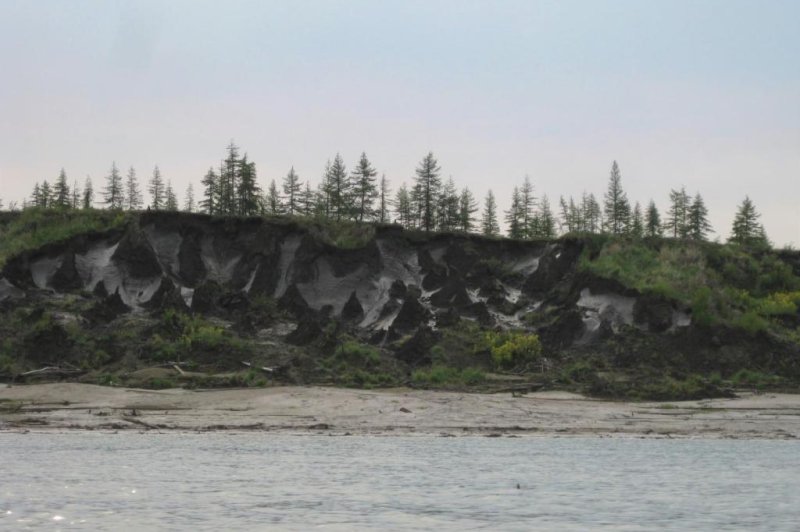Researchers tracked carbon released by thawing permafrost in large Arctic-Siberian rivers. Photo by Jorien Vonk/Stockholm University
May 7 (UPI) -- Researchers have found a way to measure the carbon released into Arctic rivers by thawing permafrost.
Carbon is everywhere. It is also often on the move. But some carbon sources are sneakier than others. To better understand the planet's carbon budget and its influence on climate change, scientists must develop ways to more accurately track some of this sneaky carbon.
When permafrost thaws, ancient carbon, sometimes frozen for hundreds of thousands of years, is freed up. As the planet continues to warm, more and more of this frozen carbon is escaping. But measuring this climate-carbon feedback is difficult.
To better track the phenomena, scientists at Stockholm University decided to measure the radiocarbon signal of runaway carbon in large rivers.
"Rivers transport carbon from different sources in their catchments, including carbon mobilized from thawing permafrost or collapsing peat, as well as carbon from the soil surface," lead researcher Birgit Wild said in a press release. "Radiocarbon dating helps us distinguish carbon from these different sources."
Older carbon contains lower levels of radiocarbon than newer, surface-level carbon. For the study, Wild and her colleagues tracked shifting radiocarbon ratios for several years, across all four seasons, in four large Siberian-Arctic rivers. Researchers used a database of radiocarbon ratios measured in core samples from permafrost deposits to contextualize their river-based measurements.
Scientists found layers of surface permafrost are the main source of permafrost- and peat-derived carbon dissolved Arctic rivers. Older permafrost layers are the main source of particulate carbon. And whereas permafrost- and peat-derived carbon accounted for just 12 percent of dissolved carbon in Arctic rivers, carbon from peat and permafrost composed nearly half of particulate carbon measured by scientists.
Researchers expect their findings, published this week in the journal PNAS, to inspire new tools for monitoring the levels of carbon released into rivers -- and eventually the ocean and atmosphere -- by thawing permafrost.















